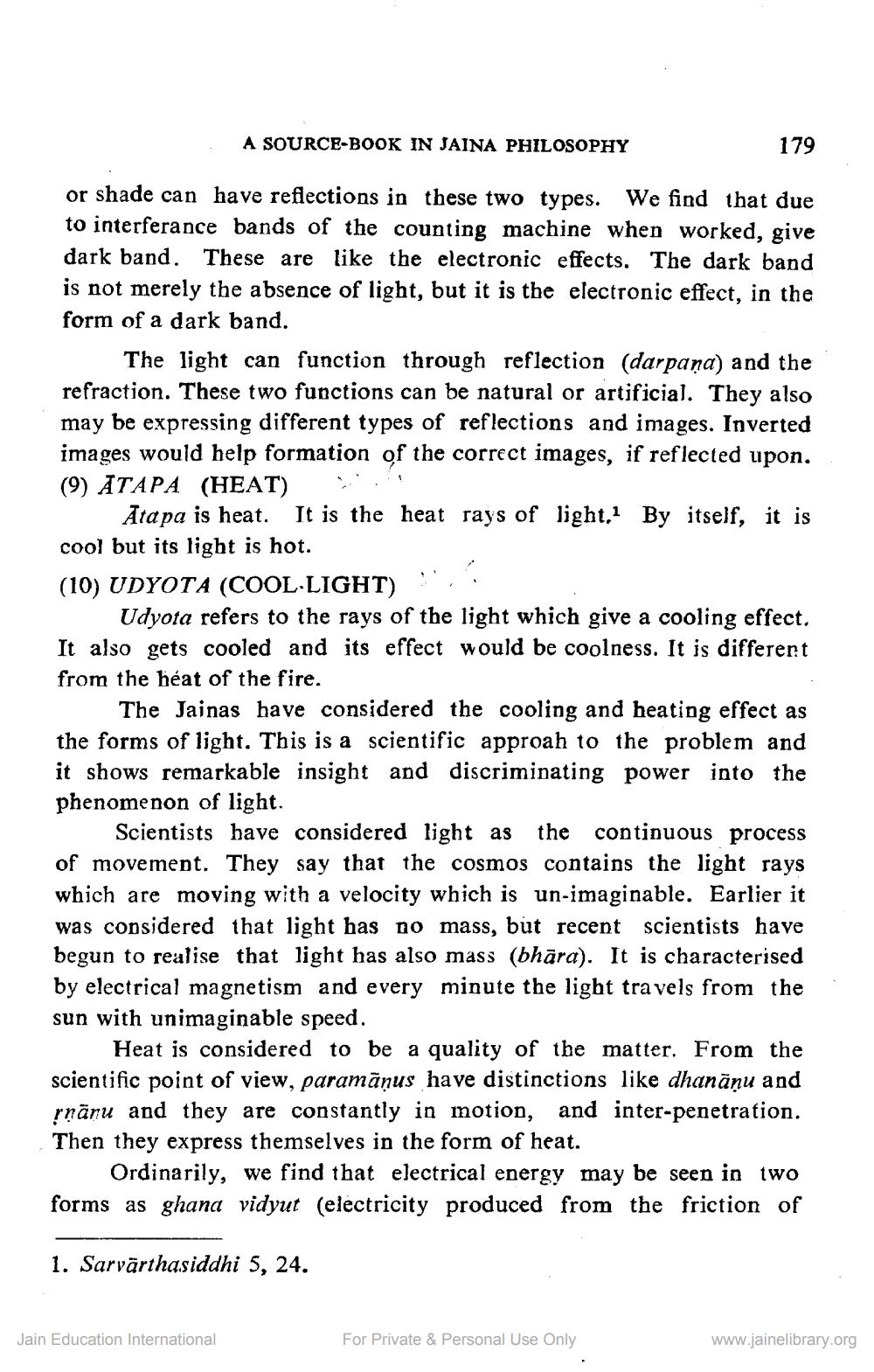________________
A SOURCE-BOOK IN JAINA PHILOSOPHY
179
or shade can have reflections in these two types. We find that due to interferance bands of the counting machine when worked, give dark band. These are like the electronic effects. The dark band is not merely the absence of light, but it is the electronic effect, in the form of a dark band.
The light can function through reflection (darpaņa) and the refraction. These two functions can be natural or artificial. They also may be expressing different types of reflections and images. Inverted images would help formation of the correct images, if reflected upon. (9) ATAPA (HEAT)
Atapa is heat. It is the heat rays of light, By itself, it is cool but its light is hot. (10) UDYOTA (COOL·LIGHT)
Udyota refers to the rays of the light which give a cooling effect. It also gets cooled and its effect would be coolness. It is different from the heat of the fire.
The Jainas have considered the cooling and heating effect as the forms of light. This is a scientific approah to the problem and it shows remarkable insight and discriminating power into the phenomenon of light.
Scientists have considered light as the continuous process of movement. They say that the cosmos contains the light rays which are moving with a velocity which is un-imaginable. Earlier it was considered that light has no mass, but recent scientists have begun to realise that light has also mass (bhāra). It is characterised by electrical magnetism and every minute the light travels from the sun with unimaginable speed.
Heat is considered to be a quality of the matter. From the scientific point of view, paramāņus have distinctions like dhanāņu and rņāņu and they are constantly in motion, and inter-penetration. Then they express themselves in the form of heat.
Ordinarily, we find that electrical energy may be seen in two forms as ghana vidyut (electricity produced from the friction of
1. Sarvärthasiddhi 5, 24.
Jain Education International
For Private & Personal Use Only
www.jainelibrary.org




